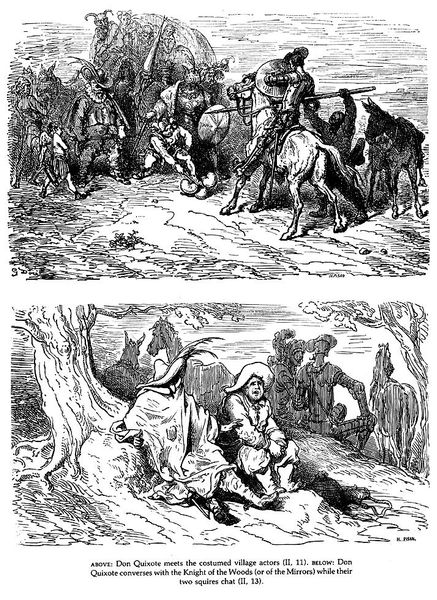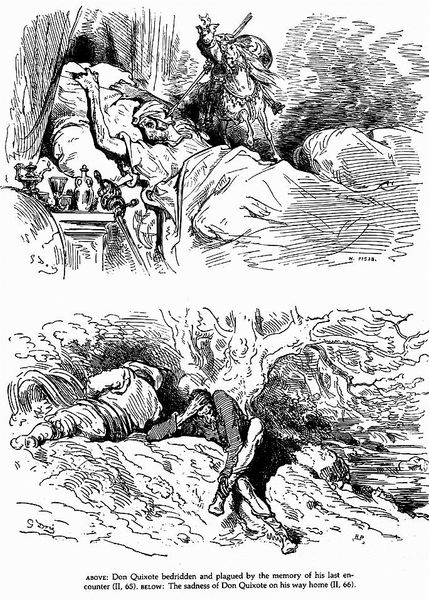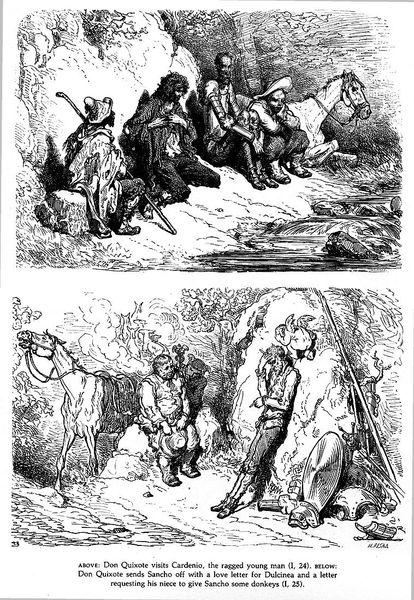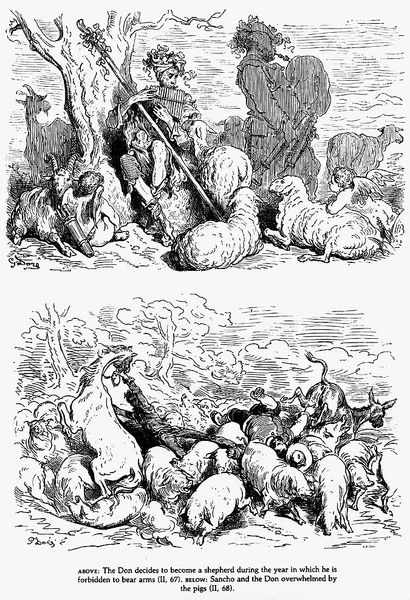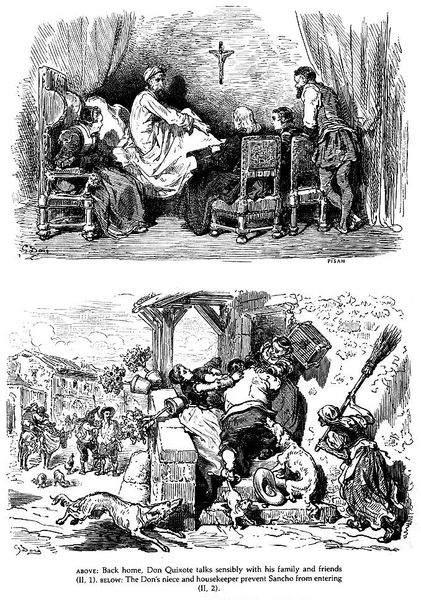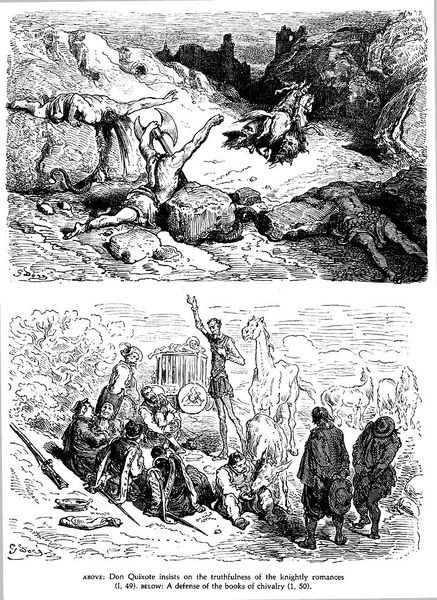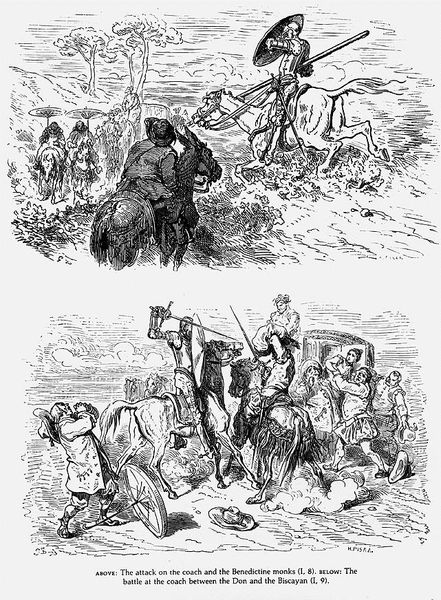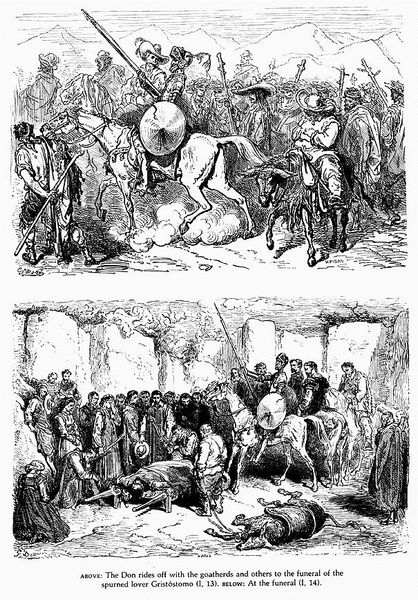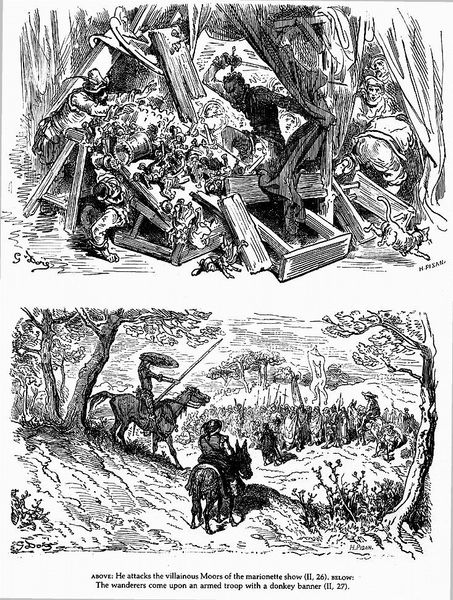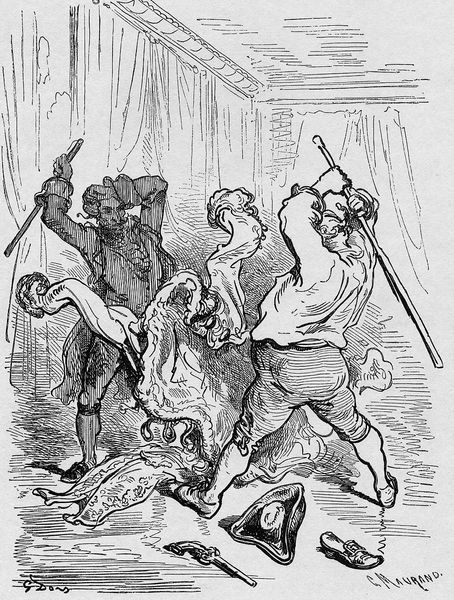
drawing, paper, ink, engraving
#
drawing
#
narrative-art
#
landscape
#
fantasy-art
#
figuration
#
paper
#
ink
#
romanticism
#
line
#
history-painting
#
engraving
Copyright: Public domain
Editor: This is Gustave Dore's "Don Quixote," an engraving that appears to be an illustration for Cervantes' novel. The scene feels chaotic and fantastical, with these dramatically different scenes stacked vertically. What strikes me most is the sharp contrast between the whimsical scene above and the anxious one below. How do you interpret this work? Curator: Well, let's consider Dore's choice to visualize this particular narrative from Cervantes. The text explores the conflict between reality and delusion, and Dore seems to emphasize this very tension. Notice how the upper scene portrays an extravagant, almost grotesque dragon, reflecting the protagonist's imagination perhaps? Now look at the bottom half – what power dynamics do you see present in the depiction of the man, the horse, and even the cherubic figure seemingly taunting him? How can we relate Dore’s choice to render those class and power dynamics? Editor: The dragon does look more like something from a fever dream! And below, there’s a clear hierarchy, with the horse and rider dominating the space, but the naked cherub... his presence is definitely unsettling. Curator: Precisely! The story touches upon the ways we are often tormented by our own perceptions, as well as questioning social constraints. We must also consider that illustrations like these disseminated ideas to a wider public and also shaped perception of characters like Don Quixote, framing him a certain way, that persists even today. Dore takes those anxieties, those absurdities, and translates them into powerful visuals. What did you make of this composition? Editor: I didn’t initially consider the social impact. It's fascinating how art can not only reflect a story, but shape its cultural understanding too. Curator: Exactly! By situating the piece within its time, its production, and its intended consumption, we can read it with a more critical, engaged eye.
Comments
No comments
Be the first to comment and join the conversation on the ultimate creative platform.
